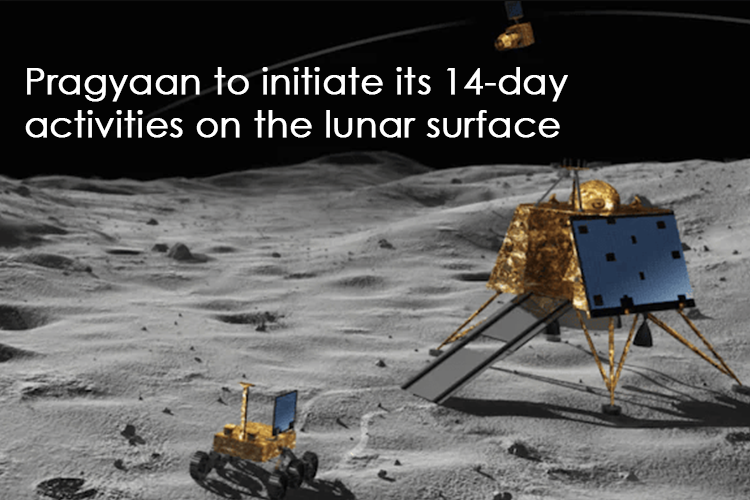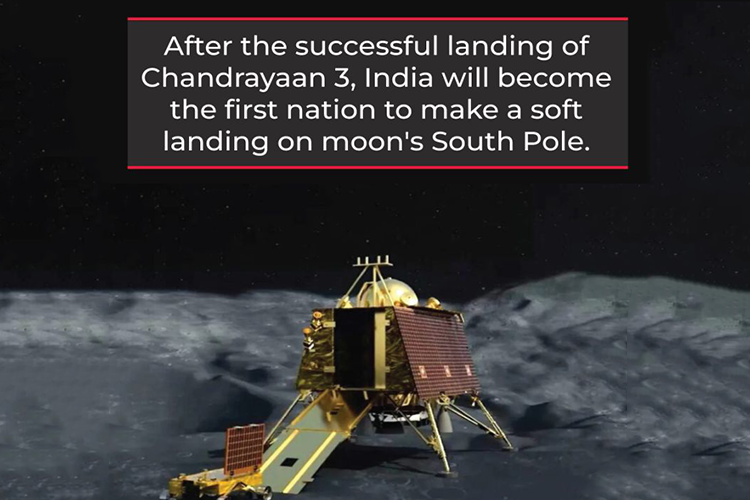It’s truly remarkable to hear about India’s successful lunar mission, Chandrayaan-3, and its achievements on the lunar surface. The successful landing of the Lander Module near the Moon’s south pole marks a significant milestone for the Indian Space Research Organization (ISRO) and for the global space exploration community.
Chandrayaan-3’s achievement of making a soft landing on the lunar surface demonstrates India’s growing capabilities in space technology and exploration. The deployment of the Rover, Pragyaan, adds another layer of scientific exploration, as it is equipped to conduct on-site chemical analyses of the lunar landscape during its mission, which spans one lunar day equivalent to 14 Earth days.
Prime Minister Narendra Modi’s perspective on this achievement, emphasizing unity and the shared human spirit in space exploration, resonates with the collaborative nature of space missions and their potential benefits for all of humanity.
The successful landing and subsequent operations are a testament to the dedication and expertise of the scientists and engineers at ISRO. This achievement adds India to the list of countries that have achieved soft landings on the Moon, following in the footsteps of the USSR, the US, and China.
Continued advancements in space exploration contribute not only to scientific understanding but also to technological development and international cooperation. India’s success in Chandrayaan-3 is a significant step forward in these endeavors.
After Touchdown, Pragyaan to initiate its 14-day activities on the lunar surface

The scientific payloads aboard the Rover Pragyaan on Chandrayaan-3 sound truly impressive and promising for advancing our understanding of the lunar surface. The inclusion of advanced instruments like the Alpha Particle X-Ray Spectrometer (APXS) and Laser Induced Breakdown Spectroscope (LIBS) shows ISRO’s commitment to conducting thorough and sophisticated analyses during this lunar mission.
The APXS will be pivotal in analyzing the chemical composition of the lunar surface. By detecting alpha particles and X-rays emitted by elements in the soil, this instrument can provide insights into the mineralogical makeup of the terrain. This data can contribute to a deeper understanding of the Moon’s geology and its history.
The Laser Induced Breakdown Spectroscope (LIBS) is another cutting-edge tool that will help determine the elemental composition of the lunar soil. LIBS works by focusing a laser on a sample and then analyzing the light emitted when the laser interacts with the material. This method can identify the elements present in the sample, aiding in characterizing the lunar soil and providing valuable information about its origins and evolution.
ISRO’s emphasis on on-site scientific experiments with Pragyaan is indeed a significant step forward in lunar exploration. The ability to directly analyze the Moon’s surface, rather than relying solely on remote observations, allows for more accurate and detailed insights. This approach has the potential to uncover new discoveries and contribute to a broader understanding of the Moon’s geological history, composition, and evolution.
The successful execution of Chandrayaan-3 and the utilization of its advanced scientific payloads have the potential to enhance not only India’s space exploration capabilities but also global scientific knowledge about the Moon.




